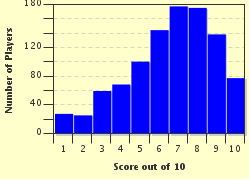Quiz Answer Key and Fun Facts
1. The cell membrane is the outermost part of an animal cell, and, is situated underneath the cell wall in plant cells. What is another name for the cell membrane?
2. Which of these is true of the cell membrane in both animal and plant cells?
3. Through many studies, including imagery of cells using an electron microscope, it has been determined that the cell membrane consists of two layers. This is known as the bilayer. What is this bilayer composed of?
4. The component molecules of the cell membrane have two main parts, the head and the tail. These parts are either hydrophobic (repelled by water) or hydrophilic (attracted to water). Which is which?
5. Which of the following is a part of the cell membrane that contains glycoproteins?
6. In plant cells, the cell membrane is one of three things that form a channel by which substances can pass directly from one cell to the next. What is the name given to these channels?
7. The net movement of a gaseous substance will follow a concentration gradient (at normal atmospheric pressure) from an area of high concentration of that gas, to an area of lower concentration of that same gaseous substance. What is the name of this biological process?
8. What process is described as being the net movement of WATER molecules from an area of low concentration of solute to an area with a higher concentration of solute? (Normal atmospheric pressure).
9. Water moves from one region to another due to differences in water potential. This is how water moves from one side of a cell membrane to the other. What has the water potential of 0 if we assume that there is normal atmospheric pressure?
10. What letter of the Greek alphabet is used to denote and quantify water potential?
Source: Author
jonnowales
This quiz was reviewed by FunTrivia editor
crisw before going online.
Any errors found in FunTrivia content are routinely corrected through our feedback system.


